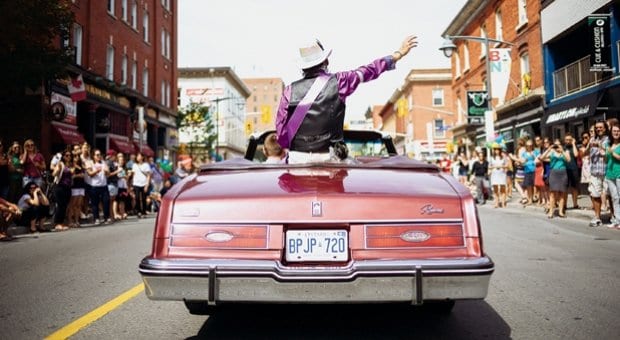Ottawa is a city reluctant to embrace change, but I’ve seen significant progress in the way our queer community has grown in the last 20 years. Back then, I was in the closet, still living in remote Kanata, completely oblivious to the renegade, underground community fighting for its liberation, health and safety, rights and its visibility. Five years later, at age 28, I came out to family and friends, visited After Stonewall (on Fourth) and my first gay bar (The Lookout), and met my first boyfriend, and yet I was completely unaware of most of the services, organizations and businesses that provided meeting places and support for LGBT Ottawans.
When I got a job as a journalist and graphic designer at Xtra, I began to meet people for interviews and realized just how many services were out there — but couldn’t understand how all this had flown under my gaydar. I hadn’t heard of ACO (on Queen), Bruce House (near Tunney’s Pasture) and PTS, let alone Gender Mosaic, the sports groups and PFLAG Ottawa. Why was our community so hard to find?
Slowly, many organizations and businesses started to move onto Bank Street. Whether there was a greater plan or not, a Village began to emerge. When Bank was flagged by the city for a major reconstruction in 2006, I rather naively volunteered to get involved to fight for a GLBT-friendly village.
Initially, it seemed like a no-brainer, so I was not prepared for the pessimism, apathy and obstinacy that came from many sides, even from our own community. People told me I was 20 years too late, that villages weren’t relevant, and businesses were terrified to support it, even some of the key gay-owned ones in the area (who shall remain nameless — you know who you are). And yet, I was unwilling to give up — I’d seen too many initiatives start up and fail, I was deeply committed to the idea, and I’d given my word that I’d see it through.
Each stumbling block that came our way I used as a stepping stone. We can’t get rainbow banners on the lampposts? We’ll give free flags to businesses. No street signs? Okay, we’ll host free outdoor movie nights right on the street. We raised money and awareness and gave people hope that change could happen. It was an exciting, exhausting, exhilarating time for our community — and for me personally. When we got our street signs in 2011, putting the City of Ottawa’s official stamp of approval on the Village, the dialogue changed. Finally, people bought into the Village; they could see the change and what was possible. The sky didn’t fall, nothing bad happened — and we won.
Just like the work that was done by trailblazers before, I feel like the Village committee’s — and my own — activism have helped others build on past successes; 2013 has been an exciting year. In the last few months, I’ve seen the number of Village street signs double and the Bank Street BIA (once our most formidable foe) pay for rainbow-coloured banners on lampposts — one of the first things we asked for back in 2006! The Pride parade has finally come back to its home on Bank, and word on the street is that it was the biggest and best festival in years. It seems we all had something to celebrate and be proud of.
So what comes next, you might ask? Well, that’s up to us. I’d love to see a new gay bar in the Village and more businesses and services. Urban density is promising for the area, but hopefully without the gentrification that’s doomed other villages in North America. I’d also like to see change in other countries around the world that continue to demonize, victimize and marginalize our brothers and sisters. But if we want change, we have to ask for it, and we have to fight for it. Anything is possible if we believe it can happen.
More on Xtra Ottawa’s 20th anniversary:
20 years of shining the light: Practising community journalism is vital, but it’s a difficult task
Our spaces, September 1993 — a look back at where Ottawa’s gay community gathered 20 years ago
Thinking back to Frontlash — Irshad Manji’s column sparked discussion and ruffled the status quo
Whither Ottawa’s gay community — the early gay movement’s shared aim is disappearing
Memoirs of an Art Fag — this ’90s scenester column tackled both politics and culture
Glenn Crawford chaired the Village committee from 2006–2012.

 Why you can trust Xtra
Why you can trust Xtra


